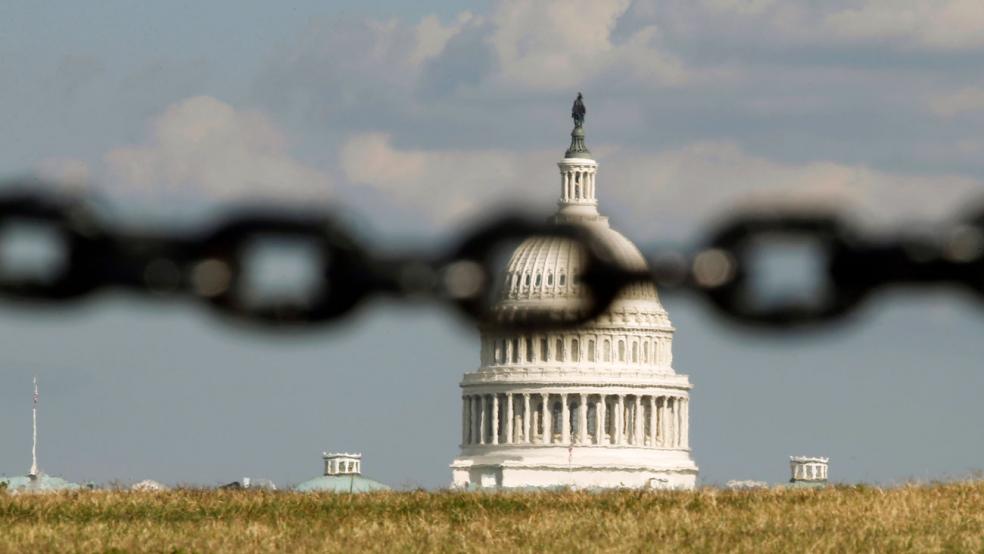The last time the federal government was shut down nearly four years ago, hundreds of adults and children were temporarily denied access to National Institutes of Health (NIH) cancer clinical trials and $4 billion in federal tax returns were delayed.
The 16-day partial government shutdown in October 2013 – prompted by a battle between congressional Republicans and President Obama over Affordable Care Act spending – led to widespread furloughs of government workers, massive inconvenience for average Americans and lost productivity in the public and private sector.
Related: Can Trump’s Wall Really Pay for Itself Over 10 Years?
Those and scores of other effects that were documented by the Office of Management and Budget (OMB) shortly after the crisis concluded, which showed that even a relatively brief government shutdown can have serious economic and social consequences beyond the political fallout.
It would seem inconceivable that President Trump, mindful of his public image and historically low approval ratings, would risk capping his first 100 days in office with a government shutdown beginning midnight Friday when a current short-term spending bill is set to expire.
Trump and White House budget director Mick Mulvaney are demanding that additional funding for defense, border security and initial planning for construction of a nearly 2,000-mile long wall along the U.S.-Mexico border be included in a new omnibus spending bill that must be passed by Friday night to keep the government operating.
Senate Minority Leader Chuck Schumer (D-NY) and House Minority Leader Nancy Pelosi (D-CA) are opposed to including billions of dollars in funding for the wall in the new stop-gap measure. They are also demanding that Trump allow a subsidy under the Affordable Care Act to continue to help cover the co-payments and other deductibles for low-income Americans.
Related: Trump May Try to Weed Out Immigrants Who Cost Taxpayers $279 Billion Annually
Trump has been treating that cost-sharing subsidy as a bargaining chip to bring the Democrats to the table to hammer out a final spending deal that would include money for the wall.
But so far, Schumer and Pelosi have balked at the administration’s bargaining strategy, and they are blaming Trump and Mulvaney for derailing last minute budget talks between congressional GOP and Democratic leaders. There’s no telling whether the current impasse can be resolved in the next few days or whether the government and the nation are headed for another government shutdown.
Beyond the political considerations of whether voters would ultimately blame the Republicans who control the White House and both chambers of Congress or the Democratic minority, another government shutdown would have real world consequences if it turned out to be anything like the last one.
Related: Will Trump’s Tax Plan Really Pay for Itself?
The October 2013 shutdown “inflicted completely unnecessary damage on our economy and took a toll on families and businesses across the country,” then-OMB director Sylvia Mathews Burwell wrote in a report that cataloged the damage done by the 16-day partial shutdown.
Here is a list of a dozen adverse effects of the 2013 government shutdown reported by the budget office:
- Federal workers were furloughed for a combined total of 6.6 million equivalent days of work, which was more than in any previous government shutdown. At the height of the crisis, about 850,000 non-essential employees were furloughed daily, including many civilian employees at the Pentagon.
- The federal government suffered at least $2 billion worth of lost productivity because of the partial shutdown.
Related: Trump Pushes Congress to the Wall to Avoid a Government Shutdown
- The federal government incurred other direct financial losses, including uncollected National Park Service fees and IRS tax collections. It also had to pay additional interest on late government payments to contractors and vendors due to 10,000 stop-work orders.
- Nearly $4 billion in federal tax refunds were delayed. At the same time, IRS enforcement and other program integrity measures were temporarily halted.
- The shutdown hurt the economy and business confidence. The Council of Economic Advisers estimated that the combination of the shutdown and a threatened default on U.S. debt led to 120,000 fewer jobs being created in the private sector during the first two weeks of October .
- Federal permitting and environmental reviews were halted, with the effect of delaying the start of job-generating transportation and energy projects. Import and export licenses and applications were also put on hold, with the attendant adverse effect on trade.
Related: Why You Might Not Get Your Tax Refund on Time This Year
- The government temporarily halted the E-Verify system that businesses use to check on the immigration status of job applicants.
- Private-sector lending to individuals and small businesses was disrupted, because banks and lenders couldn’t access government income and Social Security Number verification services. At the same time, the processing of federal loans to small businesses was held up.
- Travel and tourism was disrupted at national parks and monuments across the country. That hurt the surrounding local economies.
- Federal court cases were postponed – and defendants were inconvenienced -- because of continuance requests sought and obtained by the Justice Department.
- There were delays in federal inspections of food, products, health conditions and workplace safety by the Food and Drug Administration (FDA), the Environmental Protection Agency (EPA) and the Department of Agriculture.
- Finally, hundreds of patients were prevented from enrolling in clinical trials at the National Institutes of Health (NIH). While the federal government continued to enroll critically ill people in clinical trials, the pace of enrollment was slowed drastically.





